A fermented drink that packs an earthy, salty punch, this Beet Kvass recipe is easy to make and has a ton of health benefits. It’s perfect to enjoy on an average day or use it as a mocktail mixer for a special brunch.
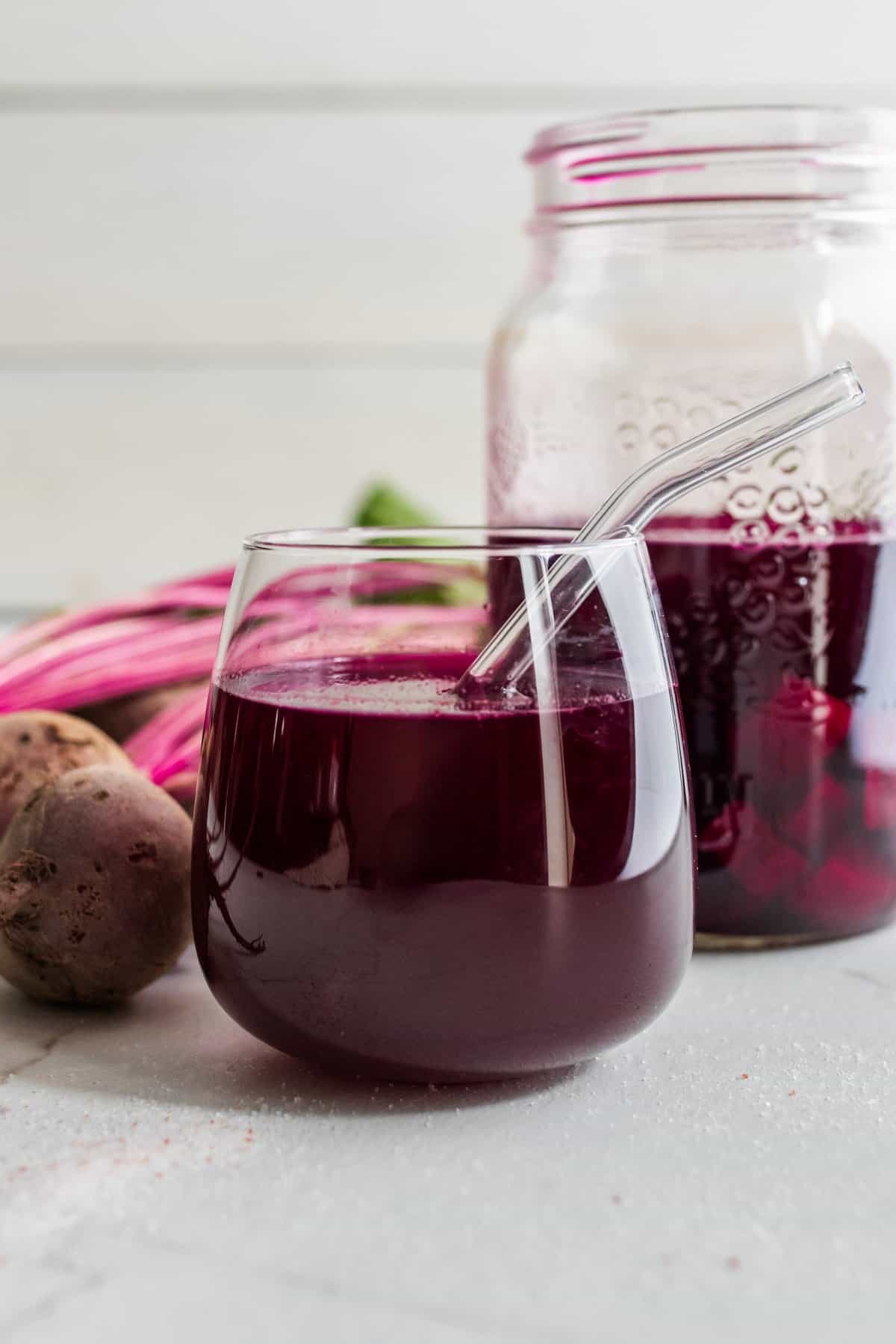
We love to enjoy all kinds of fermented drinks at the farmhouse – water kefir soda and fermented lemonade are two of the best.
Recently, we also discovered beet kvass. It’s a gorgeous, ruby-colored probiotic tonic that has too many health benefits to count. It’s an inexpensive, good way to get probiotics in your diet, along with sauerkraut and other homemade ferments.
If you’ve never heard of it, a kvass is a fermented drink from Eastern Europe, originally made from rye bread or flour. It is also commonly made from fermented beets.
You can enjoy this as a daily tonic for the health benefits or even use it in salad dressings, cocktails or mocktails, dips, marinades, and more.
Why You’ll Love This Recipe
Health benefits – The fermentation process creates beneficial bacteria (probiotics) that promote gut health. On top of that, beets themselves are nutritious powerhouses. Along with being packed with minerals and vitamins, this colorful root vegetable also has anti-inflammatory properties and nitrates, which can help with many health conditions, including high blood pressure.
Simple – It only takes three ingredients and a little bit of time to make this delicious tonic.
Has multiple uses – While you can take this as a daily tonic, you can also use it in other recipes. It’s a great way to add color, earthy flavors, and saltiness to various dishes.
Ingredients
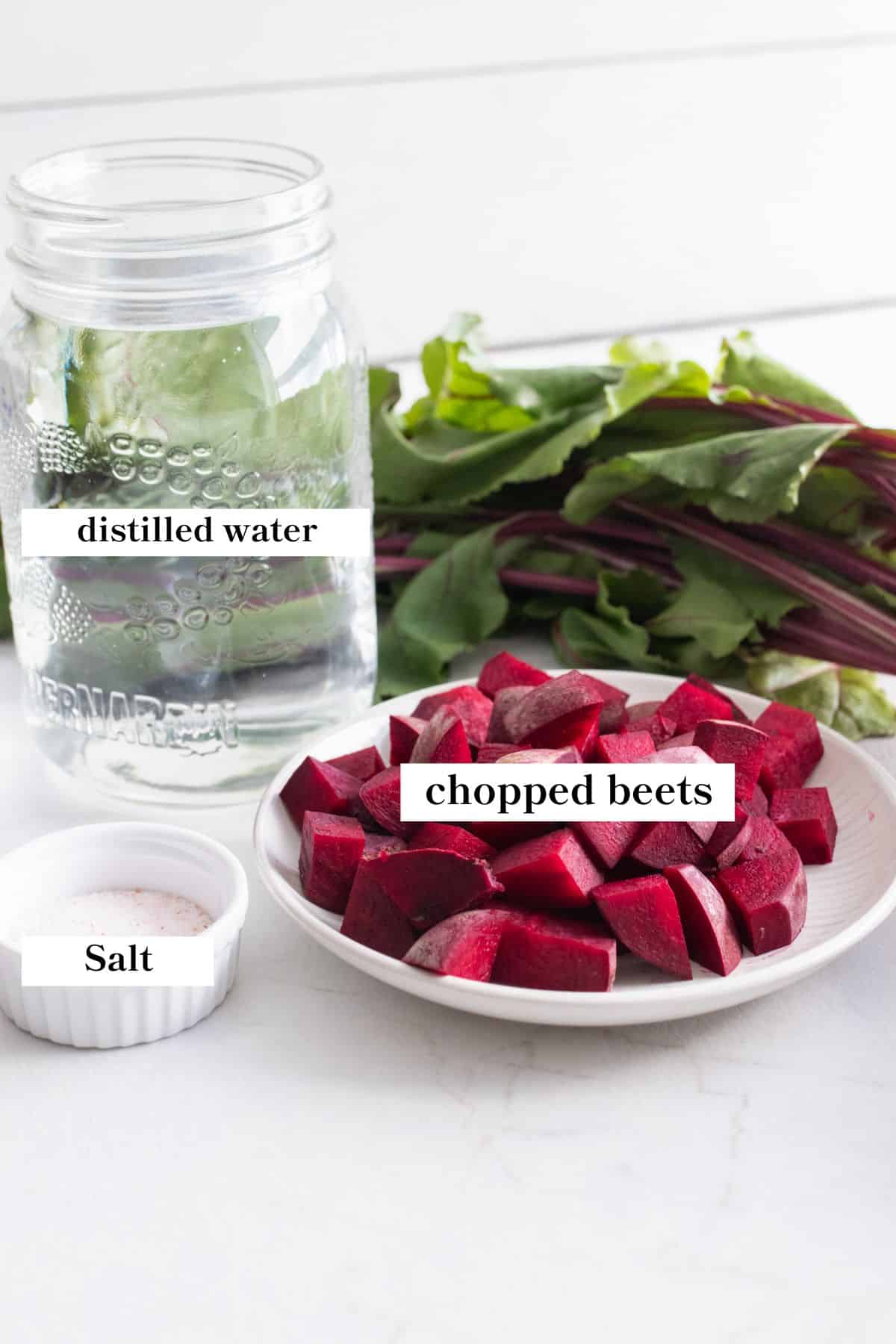
Beets – Organic beets are the best. If you are in the right growing zones, beets are also easy to grow yourself or stock up on at your local farmers market.
Filtered Water – Impurities in water, such as chlorine, can hinder ferments and kill the good bacteria. You can also boil tap water on the stovetop for 15 minutes.
Salt – I like to use good quality sea salt, like this one from Redmond Real Salt.
A full ingredient list with exact amounts can be found in the recipe card below.
Beet Kvass Modifications and Variations
While you can keep this an easy three-ingredient ferment, you can also include a few add-ins for flavor. Here are a few of my favorites:
- Ginger
- Turmeric
- Orange or lemon peel
- Black peppercorns
- Jalapeno
- Herbs like rosemary, thyme, or dill
How to Make Beet Kvass
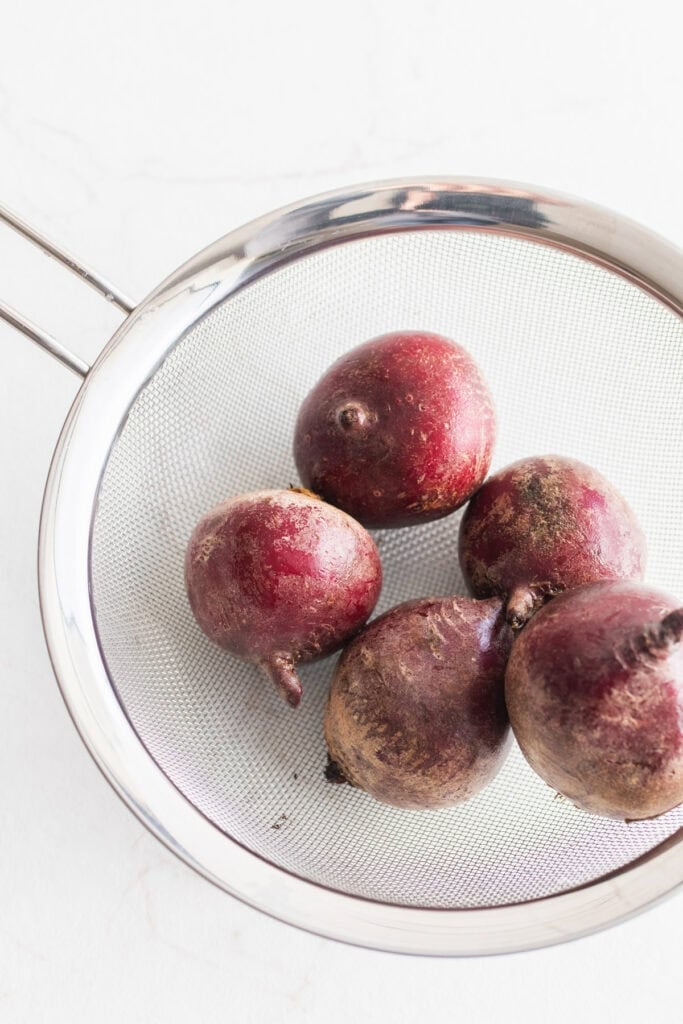
Step 1: Wash a 32 oz (4-cup) mason jar thoroughly with hot, soapy water. Rinse and dry. Then wash the beets well, leaving the skin on.
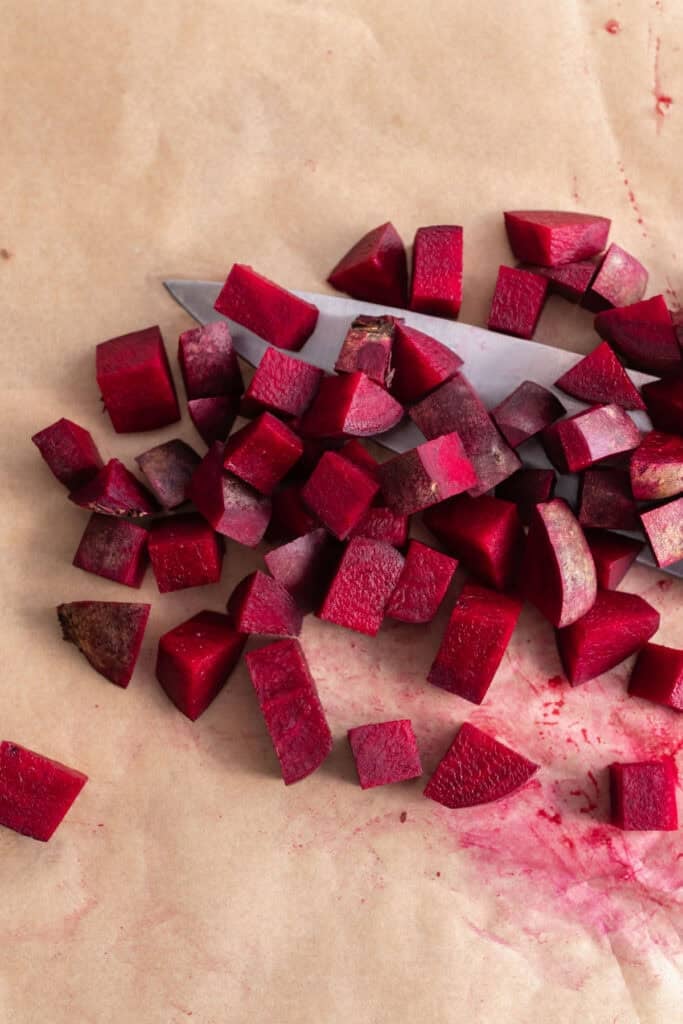
Step 2: Dice the beets into ½-inch pieces. (Tip: Place a sheet of parchment paper on your cutting board to prevent staining.) Measure out 1½ cups of diced beets.
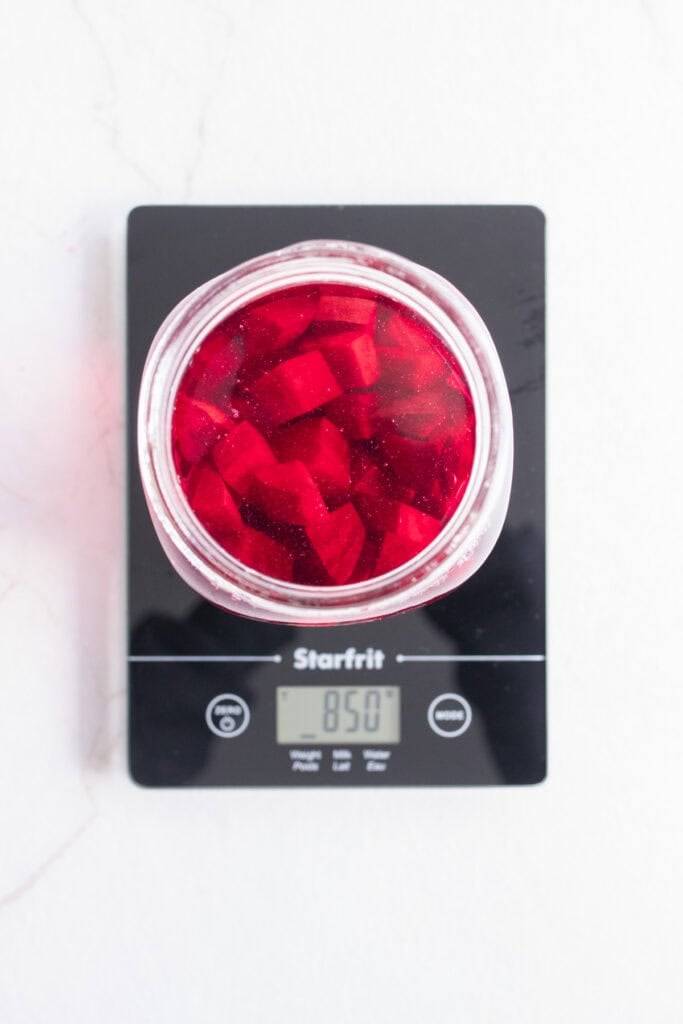
Step 3: Place the empty mason jar on a kitchen scale and press “tare” to zero out the weight. Add the beets to the jar.
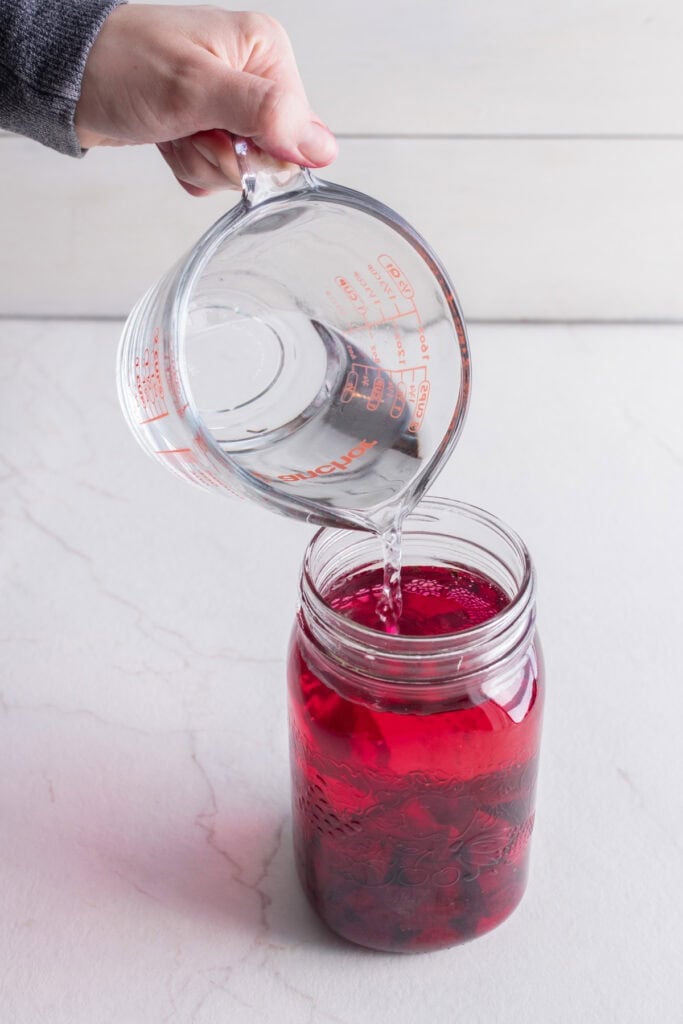
Step 4: Pour in enough water to fill it completely. Take note of the total weight in grams (beets + water). Alternatively, you can use approximately 3 cups of water, just make sure that it fills the jar. To determine the amount of salt needed, multiply the total weight by 0.015 (for a 1.5% brine). Example: If the combined weight is 860 grams, multiply 860 by 0.015 to get 12. You would add 12 grams of salt.
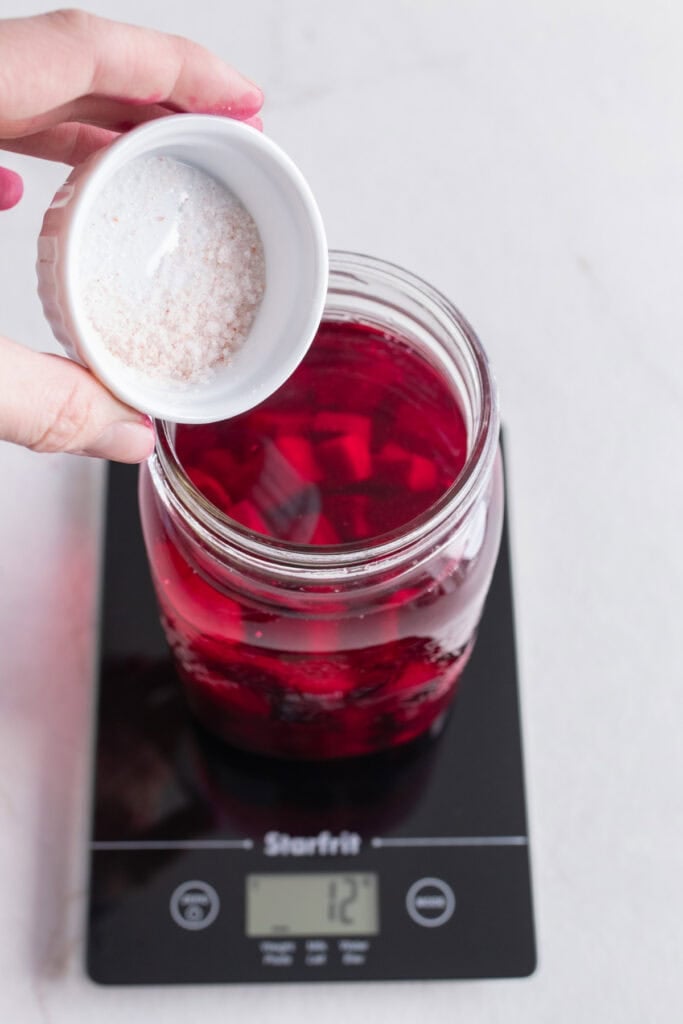
Step 5: Zero out the scale again and add the calculated amount of salt. Alternatively, you can add 2 teaspoons of salt for every 3 cups of water. Secure the lid and shake well until the salt is fully dissolved.
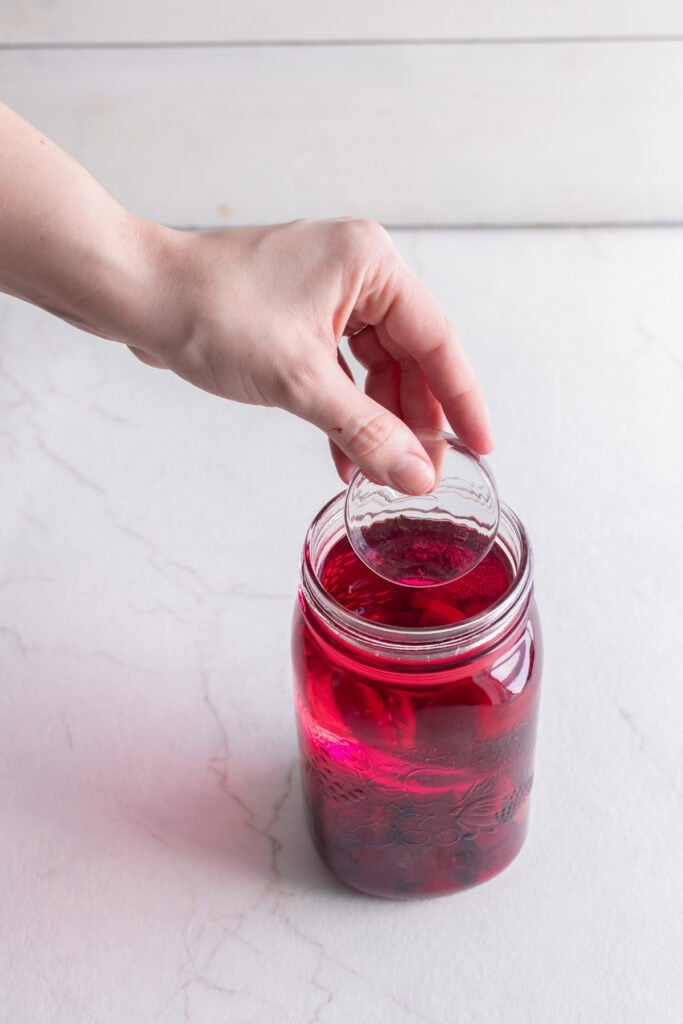
Step 6: Ensure the beets stay fully submerged under the brine. You can use fermentation weights, a small pinch bowl, or another small mason jar to keep them down.
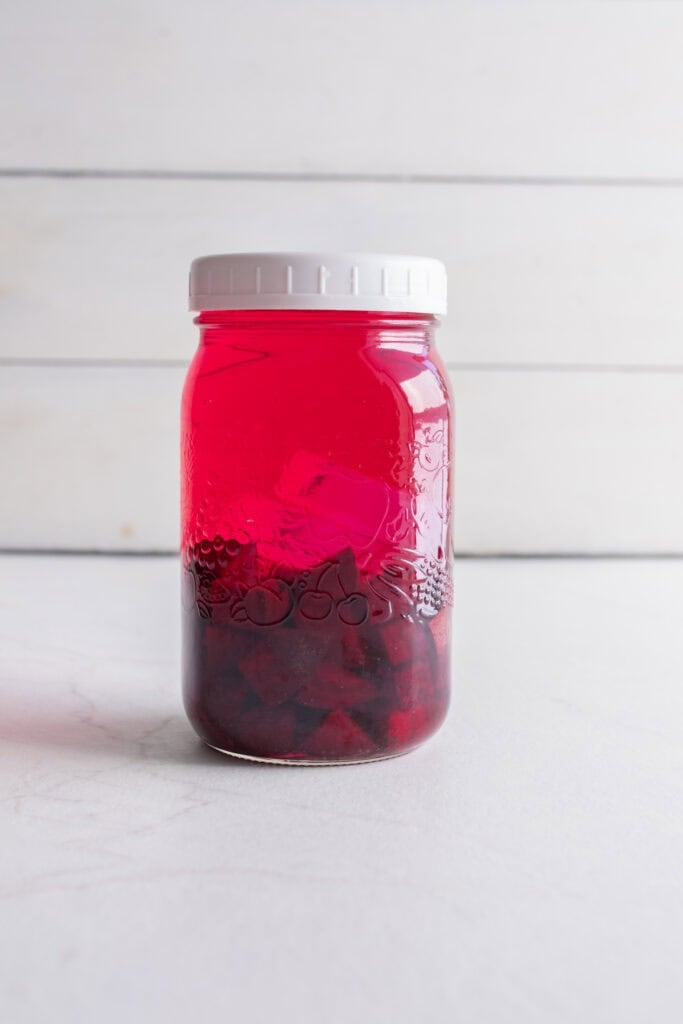
Step 7: Seal the jar with a tight-fitting lid and place it at room temperature, in a dark place away from direct sunlight. Let it ferment for 3 to 5 days, tasting daily. Each day, slightly open the lid to release built-up pressure, then reseal.
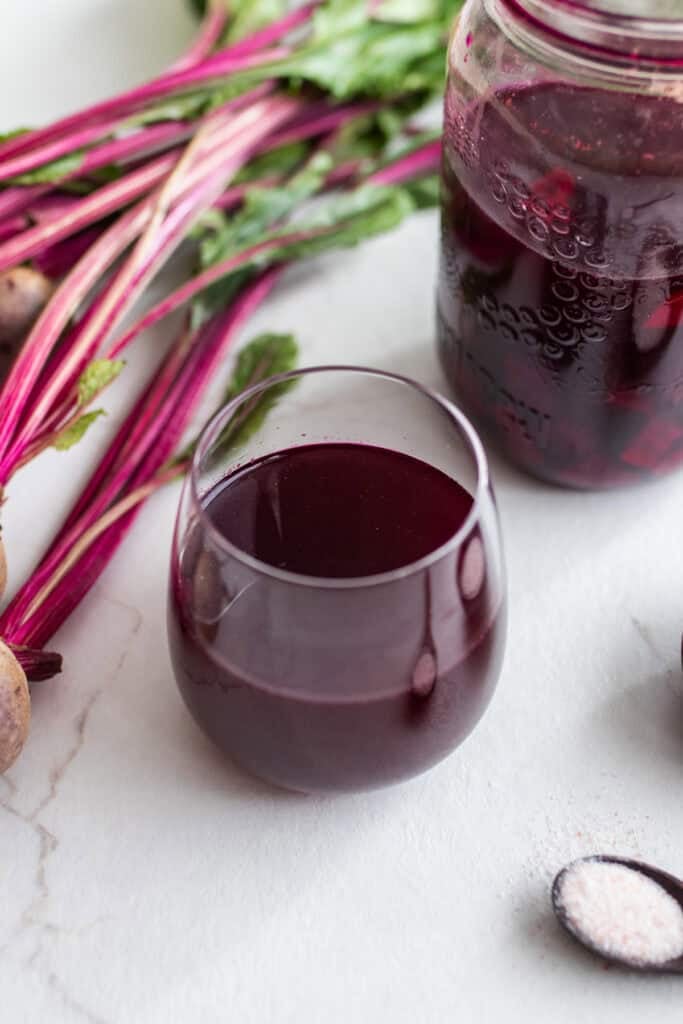
Step 8: Once the kvass reaches your desired flavor (longer fermentation = tangier, less salty taste), strain it into a clean mason jar, discarding the beets. Transfer the strained kvass to the fridge to slow the fermentation process. Pour yourself a small glass of this nourishing tonic and store the rest in the fridge.
How to Drink Beet Kvass
You can drink beet kvass as a tonic daily for the health benefits. I recommend starting slow with 1-3 tablespoons a day.
Probiotics help the gut microbiome by adding good bacteria. This process, while good, can sometimes initially cause stomach discomfort, bloating, gas, etc. This is why it is good to start slow and adjust as needed. Plus, beet kvass can be an acquired taste.
You can also add ingredients to your beet kvass to help with taste, such as raw honey or even a little ginger ale.
Tips
- If you do not have a kitchen scale, you can use volume measurements. I recommend 3 cups of water and 2 teaspoons of salt. Just be sure the water fills the mason jar.
- Too salty for you? Lacto-fermented foods like beet kvass generally taste less salty the longer they ferment.
- To speed up the ferment, you can add a few teaspoons of a fermentation liquid from a ferment you already have stored in the fridge like sauerkraut juice.
- You can also use the beets from the ferment! We love to eat them as a side for dinner, a salad topping, or a snack. It’s just another way you can get all those vitamins, minerals, and probiotics.
- As with any fermentation, if you see mold or it has a weird smell, you should discard your ferment and try again. It should smell tangy, like pickle juice or other salty brines. If you see a white foam on the top of the liquid, it is likely kahm yeast. You can scrap it off and proceed.
Recipe FAQs
There are numerous health benefits of beet kvass. Beets are high in vitamin C, manganese, and folate. These vitamins can help with immune function and more. Once fermented, beet kvass is full of probiotics which can help with a plethora of digestive problems.
Start slow with a shot or a few tablespoons a day and work up to more if you desire. You will still get a lot of probiotics just with a couple tablespoons of this tonic.
Beet kvass is considered a non-alcoholic drink. The alcohol content typically ranges from .5 to 1 percent.
How long your beet kvass ferments depends on preference. The longer it ferments, the less salty it will be. I typically let it ferment for 3-5 days, but you could go 5-7 days as well.
If you have low blood pressure or are on blood pressure medication, consult your healthcare provider before drinking beet kvass.
More Ferments from the Farmhouse
- How to Make Milk Kefir
- Fermented Hot Sauce
- Homemade Lacto-Fermented Pickles
- How to Make Fermented Carrots
- Lacto Fermented Salsa Recipe
If you try this recipe and love it, I would love it if you could come back and give it 5 stars! Tag me on Instagram @farmhouseonboone.
How to Make Beet Kvass
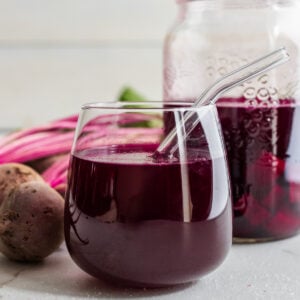
Equipment
- 1 32 oz (4-cup) mason jar (or other glass jar)
- 1 Kitchen Scale (optional)
Ingredients
- 1 ½ cups chopped beets, chopped to ½ inch cubes
- 3 cups filtered water
- 2 teaspoons of salt
Instructions
- Wash a 32 oz (4-cup) mason jar thoroughly with hot, soapy water. Rinse and dry.
- Wash the beets well, leaving the skin on.
- Dice the beets into ½-inch pieces. (Tip: Place a sheet of parchment paper on your cutting board to prevent staining.)
- Measure out 1½ cups of diced beets.
- Place the empty mason jar on a kitchen scale and press “tare” to zero out the weight.
- Add the beets to the jar, then pour in enough water to fill it completely.
- Take note of the total weight in grams (beets + water). Alternatively, you can use approximately 3 cups of water, just make sure that it fills the jar.
- To determine the amount of salt needed, multiply the total weight by 0.015 (for a 1.5% brine). Example: If the combined weight is 860 grams, multiply 860 by 0.015 to get 12. You would add 12 grams of salt.
- Tare the scale again and add the calculated amount of salt. Alternatively, you can add 2 teaspoons of salt for every 3 cups of water.
- Secure the lid and shake well until the salt is fully dissolved.
- Ensure the beets stay fully submerged under the brine. You can use fermentation weights, a small pinch bowl, or another small mason jar to keep them down.
- Seal the jar and place it at room temperature, away from direct sunlight.
- Let it ferment for 3 to 5 days, tasting daily.
- Each day, slightly open the lid to release built-up pressure, then reseal.
- Once the kvass reaches your desired flavor (longer fermentation = tangier, less salty taste), strain it into a clean mason jar, discarding the beets.
- Transfer the strained kvass to the fridge to slow the fermentation process.
- Pour yourself a small glass of this nourishing tonic and store the rest in the fridge.
Notes
- If you do not have a kitchen scale, you can use volume measurements. I recommend 3 cups of water and 2 teaspoons of salt. Just be sure the water fills the mason jar.
- Too salty for you? Lacto-ferments like beet kvass generally taste less salty the longer they ferment.
- To speed up the ferment, you can add a few teaspoons of a fermentation liquid from a ferment you already have stored in the fridge like sauerkraut juice.
- You can also use the beets from the ferment! We love to eat them as a side for dinner, a salad topping, or a snack. It’s just another way you can get all those vitamins, minerals, and probiotics.
- As with any fermentation, if you see mold or it has a weird smell, you should discard your ferment and try again. it should smell tangy, like other salty brines. If you see a white foam on the top of the liquid, it is probably kahm yeast. You can scrap it off and proceed.
Nutrition
Nutrition information is automatically calculated, so should only be used as an approximation.
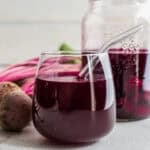
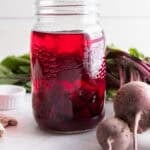
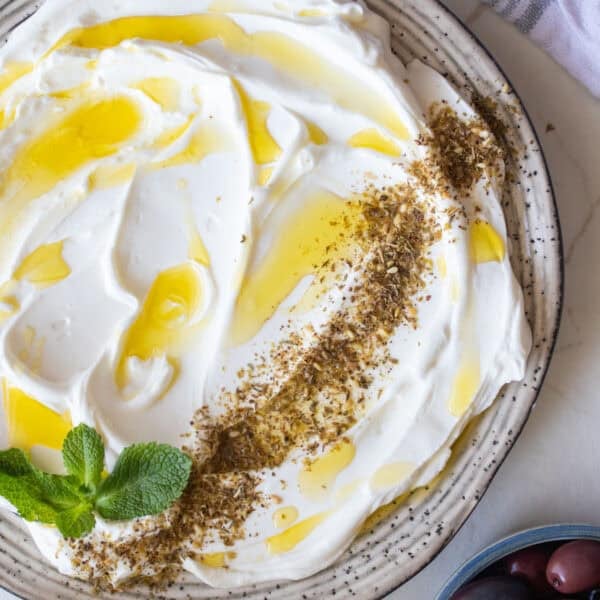
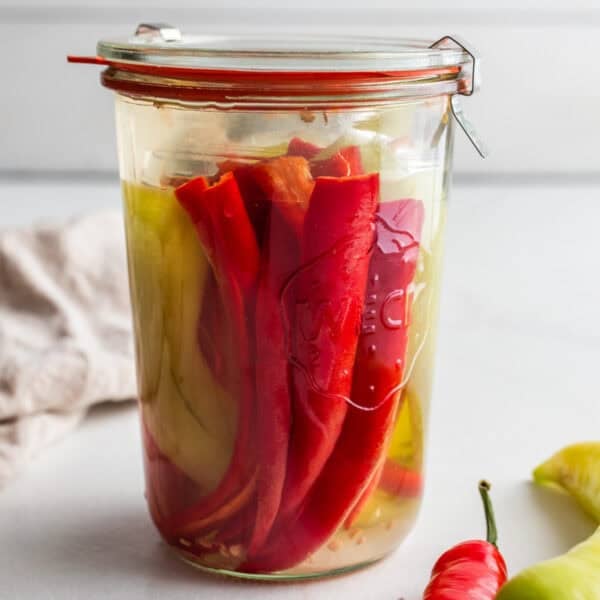
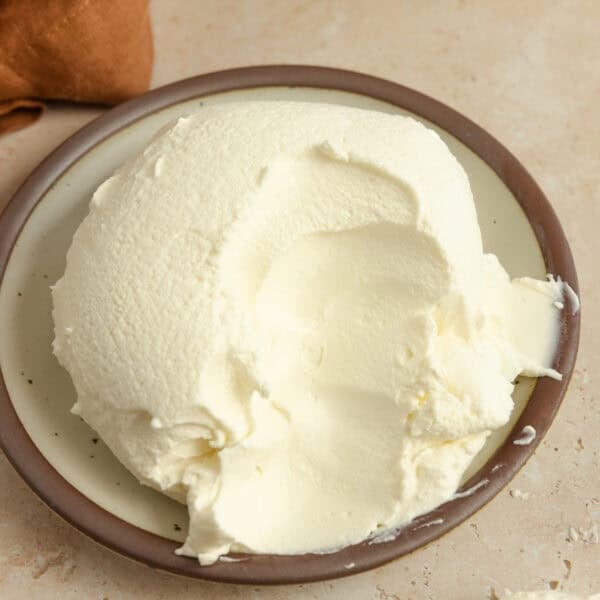
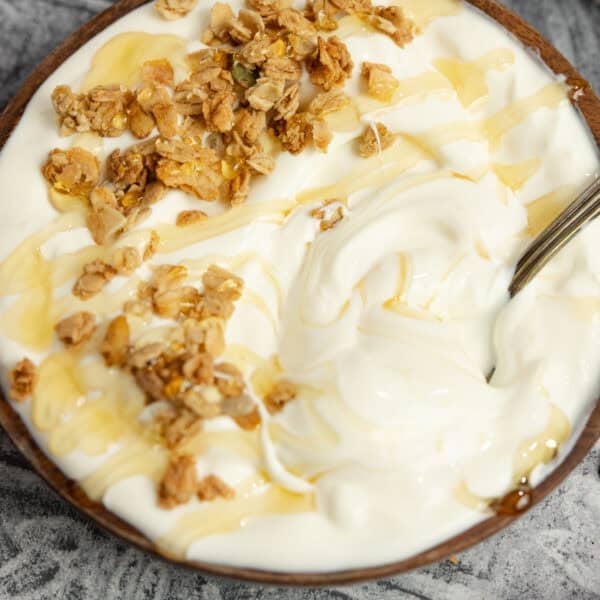






Would this be like the same liquid that is used to ferment beets in your other recipe? Thanks!
Yes.
Love beets will be drying this recipe. Thanks for all your hard work.
Cece
Do you use cooked beets for this recipe?
No.
Love the salty earthiness
Going to try this…
A 6thway to enjoy beets!